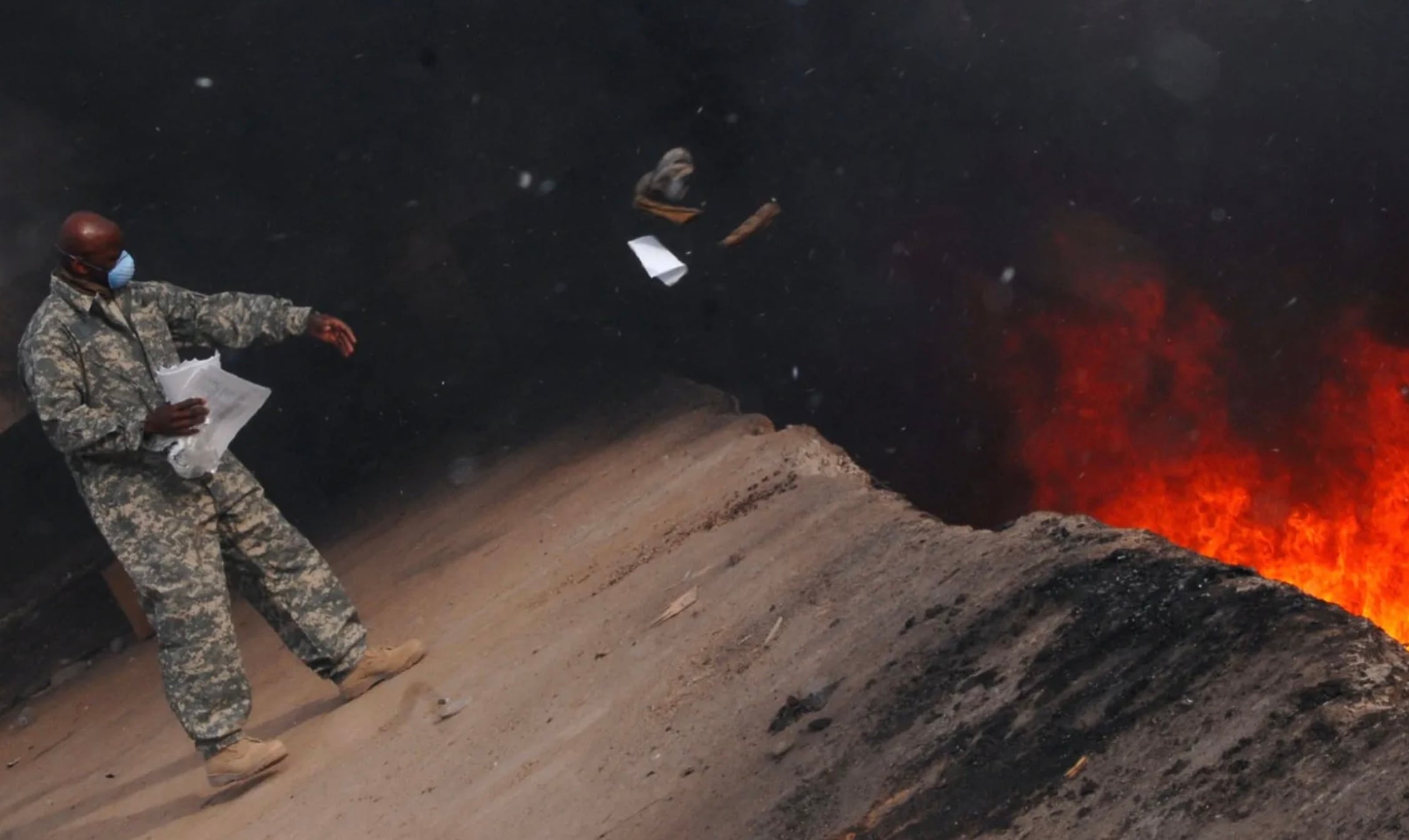Editor’s note: This article first appeared on The War Horse, an award-winning nonprofit news organization educating the public on military service. Subscribe to their newsletter.
As an Army infantryman, Ernest Barrington was very familiar with the thick smoke and fumes that came off the burn pit at Joint Base Balad in Iraq. The toxic dust that wafted from the huge, open-air ditches where the military burned everything from tires and ordnance to medical waste and plastic would coat his skin and settle on the inside of his nose and under his eyelids.
“You go to take a shower, it’s in the shower with you. So you’re cleaning your skin, and as you’re drying, the stuff is landing on your body. By the time you make it back to your room, you have the toxins right back on you,” he said. “Every day that you’re there, you’re breathing it in.”
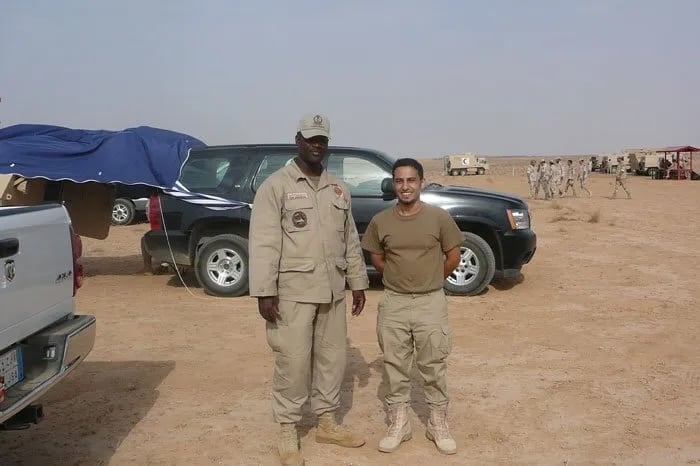
Everyone on base breathed it in — Barrington’s fellow soldiers and the foreign military members from allied nations, the burly ex-Special Forces operators who took lucrative gigs working contracted security, the workers from Pakistan, the Philippines, and Nepal who ran the laundry and the chow hall and drove the fuel trucks.
The toxic ash was the same, but access to care for those battling cancers almost two decades later is not. Veterans are now guaranteed coverage; the estimated tens of thousands of contract workers debilitated by burn pits are not.
One group who served their country during the “forever wars” is now rightly protected, advocates say. But members of the other group are left to fight with insurance companies, one by one, claim by claim, beaten down by bureaucracy, exhausted by illness.
Barrington understands the predicament.
A historic commitment
When he retired from the Army in 2007, Barrington turned around at 40 and picked up a series of private contracting jobs, which took him from Kuwait to Saudi Arabia and eventually back to Iraq. In 2020, on a trip from Washington, D.C., to Erbil, the charter plane Barrington was in landed hard on the tarmac. He felt his back seize up.
Over the next few weeks, the pain got worse. An MRI revealed multiple shattered vertebrae, he told The War Horse. It was an unusual injury, doctors told him, so they ran some tests. Soon it made more sense. They diagnosed him with two separate types of cancer: prostate and multiple myeloma, a fairly uncommon blood cancer.
In the 13 years since Barrington had put his uniform away, veterans who served at bases with burn pits started getting sick with respiratory diseases and unusual cancers. Certain forms of multiple myeloma were among them. Years of advocacy around the issue led to the passage two years ago of the PACT Act, a historic commitment that for the first time removed veterans’ burden for proving their exposure to burn pit toxins was directly responsible for their sickness.
The law established a “presumptive service connection” for certain diseases — if a veteran was diagnosed with a condition on the list and had served at a base with a burn pit, VA would presume it was caused by their service, and the veteran would be entitled to care. After the law passed, Barrington said, he filed a claim with VA.
But Barrington, who now lives in Jacksonville, Florida, with his wife, says it’s unclear if his cancer stemmed from his time at Balad Air Base as a soldier, or if it’s connected to the toxins he was exposed to during his time working as a contractor—or both. So he’s also filing a claim under a World War II-era law called the Defense Base Act, which requires contracting companies to carry insurance for their workers’ war zone injuries or illnesses.
The hundreds of thousands of private contractors who served alongside uniformed service members in Iraq or Afghanistan—often doing similar work — have many of the hallmark injuries and illnesses of the post-9/11 wars: rare cancers, post-traumatic stress, traumatic brain injuries.
But those contracted workers injured on bases overseas aren’t protected by the PACT Act for cancers or lung diseases that follow their deployment. Instead, they must file a workers’ comp claim under the Defense Base Act, which can lead to medical coverage and monetary compensation for sick workers. Civilians who work directly for the government must file an entirely different type of claim.
But many workers are unaware that they are covered, and the arcane, bureaucratic process to see a claim through means civilian workers can wait years to get compensation for the harm they suffered. Many never get any at all.
The growing ‘camo economy’
Last month, President Biden announced that VA had granted more than a million PACT Act claims to veterans for cancers and lung diseases stemming from burn pit exposure. In the 23 years since 9/11, only about 150,000 Defense Base Act claims — for every type of illness or injury — have been filed by contractors who deployed to Iraq or Afghanistan.
The disparity is even more significant considering another trend: Civilians are playing a dramatically larger role in America’s wars.
For 200 years, the ratio of U.S. military members to contract workers remained fairly constant — about one contractor for every 100 soldiers.
But that changed after Vietnam. The American public had little stomach for the heavy toll the war had taken on its troops, and the end of the draft significantly decreased the size of the fighting force.
Privatizing government work was popular in Washington, and jobs previously done by soldiers, sailors, and airmen were increasingly contracted out to civilians. By the first Gulf War, there was one contractor for every 50 military personnel. By 2009, the ratio was 1-to-1 in Iraq and Afghanistan. And as troops began to withdraw, many contract workers stayed and soon exceeded the number of military members.
“When we talk about how many American troops are going overseas, we’re not also counting the number of contractors going overseas,” says Heidi Peltier, a Brown University economist who has studied what she calls the “camo economy” — the military contracting industry. “And when they talk about injuries and deaths, that’s usually the military injuries and deaths, not the contractor injuries and deaths. … The impact is much less visible.”
Brown University’s Costs of War project has estimated that more contractors than service members died in the post-9/11 wars — 8,189 to 7,053.
In Iraq and Afghanistan, civilian workers guarded bases, fuel convoys, and American diplomats. They maintained equipment and weaponry. They cooked and cleaned and did laundry.
Some of that work paid well. Private security contractors who worked for companies like Blackwater could make upwards of $1,000 a day. But much of the labor was subcontracted out to foreign workers from poorer countries, who were sometimes paid just $300 or $400 a month.
“This is one of the things my Afghan friends always used to joke about, they would sort of call the base an American base. But if you went onto the base, there were very few Americans there,” says Noah Coburn, a political anthropologist at Bennington College who has studied foreign labor on U.S. bases.
Coburn says that ostensibly, the military only uses contractors in support roles. But in reality, many civilian workers face the dangers of war: Macedonian janitors were taken hostage by the Taliban. Pakistani fuel tank drivers dodged enemy fire. Ugandan security guards were ambushed with rocket fire.
Under the Defense Base Act, anyone who works for a U.S. military contractor overseas is entitled to file compensation and health care reimbursement claims for injuries or illnesses that resulted from their work. In practice, though, filing can be nearly impossible for workers who return to their home countries with little idea how to navigate the process. It can be nearly impossible for workers to connect with American lawyers to file paperwork, Coburn said. Doctors abroad may not be aware of how to best document a medical condition to increase a claim’s chance of success.
Coburn has found that workers who file a claim from a non-U.S. address have a lower chance of getting claims approved than those from U.S. addresses. But even for Americans, getting compensation for their injuries can be difficult.
“There’s a whole bunch of these people that need help,” says Scott Dillard, a former Army officer who later worked as a contractor in Afghanistan and now helps fellow former contractors navigate the claims process. “They have no clue that there are resources available to them because they’re not educated on it.”
Military contractors are supposed to inform their employees about the Defense Base Act and post notices about workers’ rights to compensation. But Dillard says he never saw a notice.
When civilian contractors do file a claim, proving the condition stemmed from their work overseas can be difficult. The law’s statute of limitations begins when a worker becomes aware of his or her condition. That means that if an illness pops up years later, a worker can still potentially file for benefits — but it may be harder to prove what caused it.
That can be a problem. Collecting evidence can be difficult and expensive, and insurance companies say they need to scrutinize claims to make sure people aren’t abusing the system.
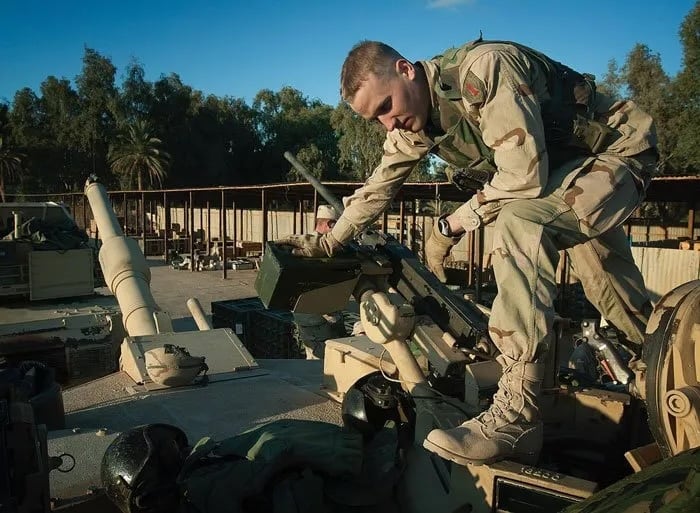
“When it comes to losses like this, you’re going to have people that are going to see what they can get for free, and you’re going to have legitimate claims,” says Brian Smith, who specializes in Defense Base Act coverage as a vice president at Insurance Office of America, an insurance broker firm. “The issue has to do with the validity of the claim when you go back that many years.”
‘Not going to deal with this’
Veronica Landry knows well the white-hot scrutiny of insurance companies.
In 2004, she took a contract job in Mosul, Iraq, staffing the base gym and the recreation center, then was quickly promoted to working as an operations specialist and historian. The work wasn’t as danger-free as it sounded. The air turned black when tires were in the burn pits. During her assignment, the dining facility was blown up by a suicide bomber. And when a soldier was hit with a mortar round in a separate incident, Landry tried to use CPR to keep her alive, she said.
She filed a claim for PTSD when she came home, but she says the insurance company denied it.
Lawyers who spoke with The War Horse said that’s not unusual. If an insurance company denies a claim, the person who files it can escalate it to a formal adjudication process through the Department of Labor. But Landry didn’t know that at the time.
“I thought when they said ‘denied,’ it’s just, that’s it. You’re done,” she said. And she didn’t feel up for a fight.
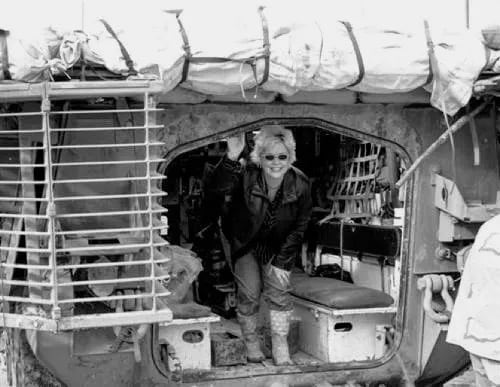
As the years passed, Landry began having trouble breathing. In 2015, her lungs collapsed. When she was diagnosed with obliterative bronchiolitis, an irreversible lung condition, she suspected her exposure to burn pits in Iraq might be the cause. This time, she said she did her research. She was prepared for the fight.
Landry’s new claim took two years to wind its way through the process. There are only 37 administrative law judges in the Department of Labor and more than 10,000 Defense Base Act claims pending adjudication as of March, according to data provided by the department.
For others, the wait can stretch past three years. And for those who aren’t able to work because of their injuries, it can feel interminable.
“You’re four years in,” says Howard Grossman, a lawyer who specializes in Defense Base Act claims, “and the client is living on ramen noodles and microwave popcorn.”
Landry says that investigators for the insurance company, AIG, combed through her social media accounts and used photos of her exercising to make the case that she wasn’t as sick as she said she was. AIG declined to comment.
Grossman said he has seen private investigators for insurance companies convince people to sign blank authorization forms that the firms can use to access personal medical and pharmaceutical information.
“The VA is not perfect, as we know, but its role in life is to help injured veterans,” says Gary Pitts, the attorney who represented Landry. “What happens with the contractors is they come home, and they have to deal with a worker’s comp insurance company whose role in life is to help the worker’s comp insurance companies.”
But Landry’s case was a victory: In 2018, a judge ruled that her condition was related to her toxic exposure in Iraq, citing Landry’s description of breathing in the thick, black burn pit smoke, and her doctor’s determination that she suffered from a “deployment-related lung disease.”
It was the first judicial decision in the country linking any burn pit exposure to a serious lung condition. Groups advocating for the PACT Act seized on the ruling as evidence that VA should do more to help veterans with lung diseases and cancers who were exposed to burn pits.
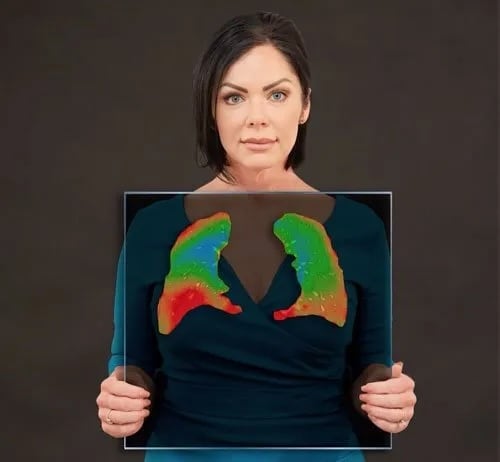
Obliterative bronchiolitis became one of the conditions that VA guarantees coverage for veterans under the PACT Act. But contractors like Landry, with the same condition, are still on their own and must find a lawyer to fight on their behalf for compensation.
“It’s one by one,” Pitts says. In 23 years of working on the Defense Base Act, his firm has filed around 11,000 claims.
In Landry’s case, the judge determined her insurance company should pay her medical bills. But Landry says that she had to fight AIG for every bill to be reimbursed. Eventually, she gave up and settled out of court.
Before settling, she was also awarded monetary compensation. The amount ended up being as small as the system made her feel.
Just $4 a week.
This War Horse feature was reported by Sonner Kehrt, edited by Mike Frankel, fact-checked by Jess Rohan, and copy-edited by Mitchell Hansen-Dewar. Abbie Bennett wrote the headlines.
